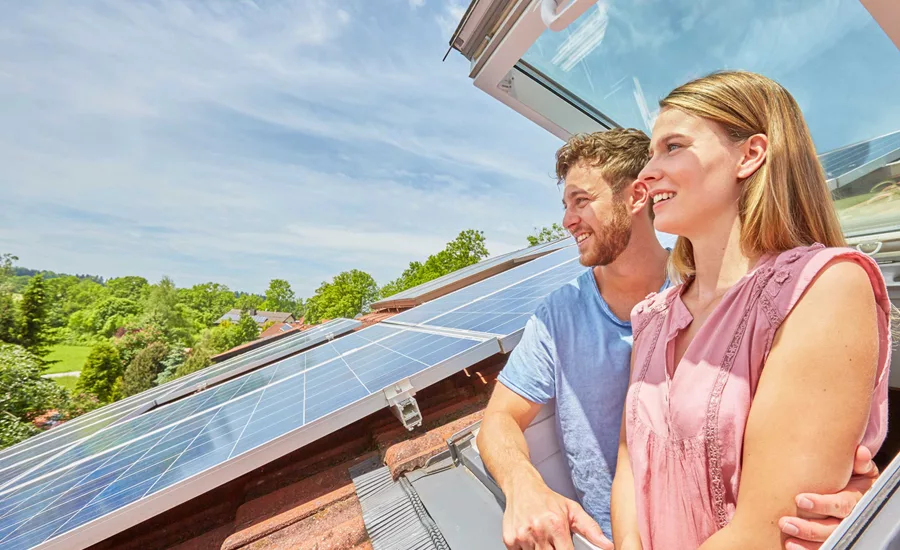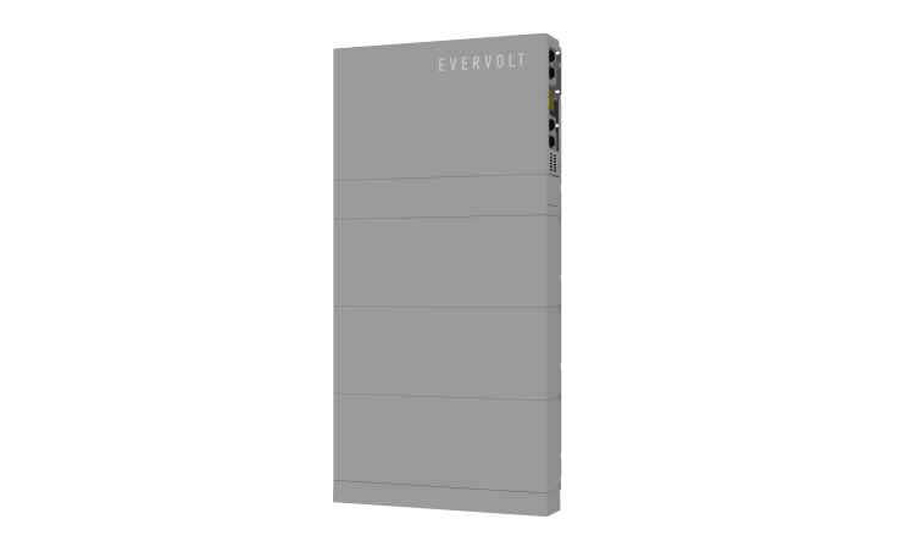Solar Special Section
What is ‘Heartbeat Technology’ and How Can it Optimize Solar?
Solar Surges in Multiple Roofing Markets – are Roofers Ready?

As energy prices rise and grow more volatile, homeowners are increasingly choosing to generate clean, free power at home by adding home energy devices such as solar panels, batteries, electric vehicle chargers, and heat pumps that can lower their power bills.
The challenge is managing these devices, which work together to optimize when a home energy system stores the power it generates and when it distributes it. Previously, that meant juggling data across multiple mobile apps and manually piecing it together to make the best decisions.
A new technology called “Heartbeat,” powered by AI, is changing that. Developed by 1KOMMA5, Heartbeat is currently on the market in Australia. Let’s take a closer look at the technology.

Panasonic's EVERVOLT home battery system, which can connect with its SmartBox energy management technology.
What is Heartbeat Technology?
Heartbeat is a small device that connects your home energy systems using Internet of Things, or IoT, technology, enabling you to view and manage use from a single software platform accessible via a smartphone app. The app gives you all-in-one insight into your rooftop solar panel system, home battery, heat pump, and EV charger.
Heartbeat monitors a home’s energy consumption and combines energy usage data with external information, including weather forecasts and utility electricity prices. Using AI, it then scrutinizes that data to make decisions about how and when to store and discharge solar power most effectively.
For example, Heartbeat can tell your battery to store power when electricity prices are low. If there are clouds in the forecast and electricity prices are high, Heartbeat will tell the home battery system to store electricity in advance to reduce your exposure to those high costs.
Heartbeat also tracks the performance of solar panels to identify any issues. Sometimes, it can proactively resolve the problem (e.g., by reducing a panel's power output), while other times, it will notify homeowners of the fault so you can resolve it quickly.
The difference between ‘Heartbeat’ and a home energy management system, or ‘HEMS’
Like a HEMS, Heartbeat connects devices so you can monitor and control energy use from a central location. Both HEMS and Heartbeat learn your energy patterns and preferences over time, giving you greater visibility into how your household consumes energy and allowing you to make cost-saving adjustments.
The main difference is HEMS technology is typically compatible solely with devices from the same manufacturer. However, most homeowners have devices from several brands, which means managing each device independently. The drawback is missing insights and automation resulting from the systems working together collaboratively.
With Heartbeat, you can centralize the control and data collection across all your smart energy devices — regardless of brand — so they can work seamlessly. This maximizes efficiency and comfort and allows you to prioritize charging based on your needs.
What are the advantages of using Heartbeat technology?
Technology like the Heartbeat Platform provides several homeowner benefits:
- Lower bills and less energy waste. Heartbeat helps maximize the potential of your solar power and home battery system. By ensuring your system stores and distributes solar energy at the best times, Heartbeat keeps your bills down, so you get the most value from your solar power.
- Easier energy management. By linking all devices together in a single platform, Heartbeat makes it much easier to control energy usage in the home and make informed decisions.
- Optimized system efficiency. Heartbeat monitors performance to keep all energy systems operating at their best. It also identifies faults early, helping to minimize the time and costs involved in rectifying any issues.
The Heartbeat platform provides an exciting glimpse into the "new normal" for home energy management. U.S. homeowners can take advantage of similar technologies. Panasonic’s EVERVOLT SmartBox energy management device, for instance, connects your home battery system, smart devices, solar panels, and the grid — all in one place.
SmartBox makes optimizing your energy use easy and prolongs your battery’s charge, ensuring you get the most out of your solar energy. It will also seamlessly switch your home to battery power if there’s a grid outage, ensuring that your critical appliances are always powered.
Looking for a reprint of this article?
From high-res PDFs to custom plaques, order your copy today!









